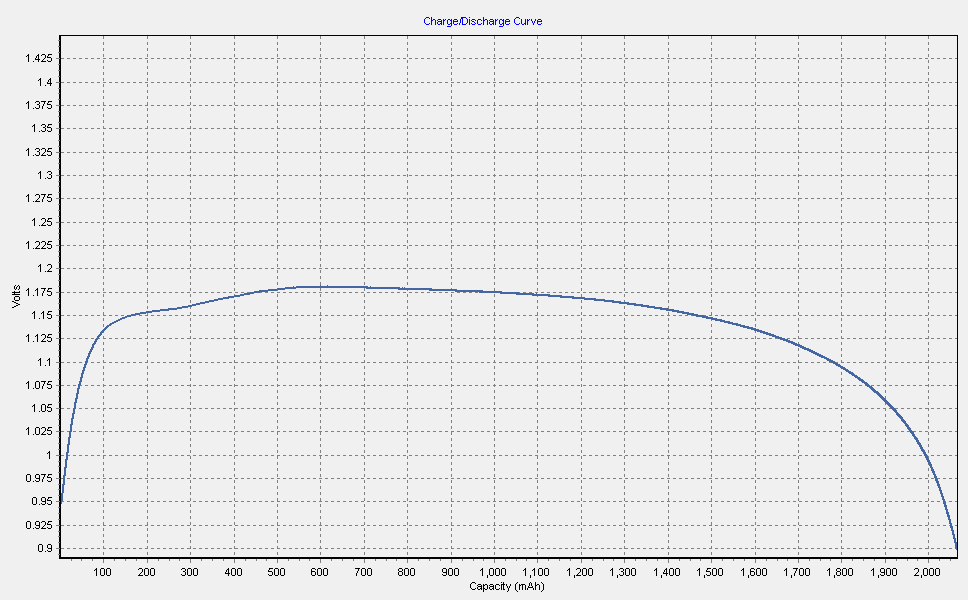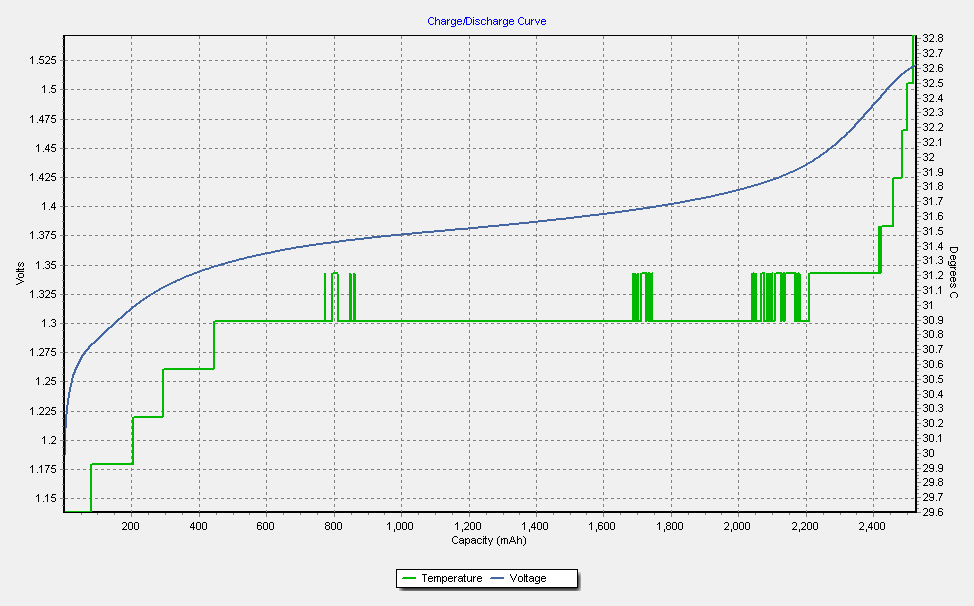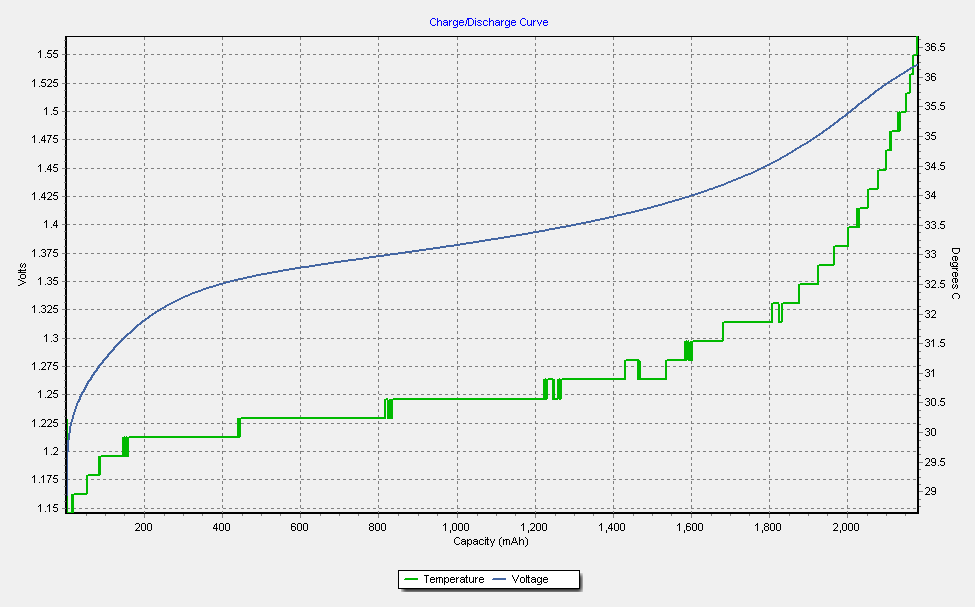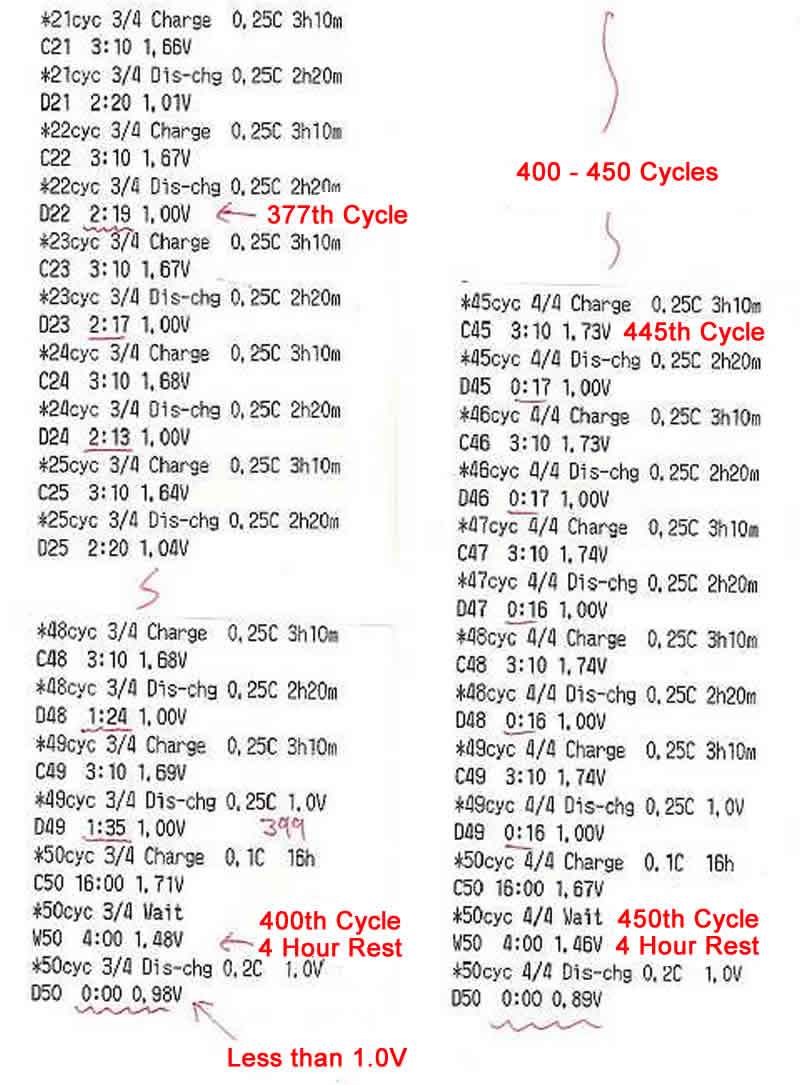Power Me Up
Enlightened
Out of curiosity, I decided to run a cycle life test to compare the high capacity Eneloop XX to the Turnigy 2400. In Australia at least, the Eneloop XX cells are quite expensive - about 30% more than regular Eneloops and they rarely go on special. Regular Eneloops are often on special at less for an 8 pack than the Eneloop XX cells cost for a 4 pack! The Turnigy 2400 cells on the other hand are quite cheap. Ignoring shipping costs, they're cheaper than regular Eneloops even when the Eneloops are on special.
To begin my testing, I took a single Eneloop XX cell and a single Turnigy 2400 cell and placed them both in the same charger. For this test, I decided to run both charging and discharging at only 1 amp - as the cells are only rated for 500 cycles each, I decided that it was worth running the test at a lower rate.
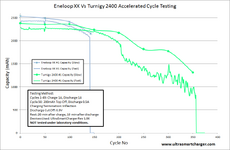
To my surprise, despite being more expensive, the Eneloop XX cell lasted for a significantly lower number of cycles than the Turnigy cell. I then decided to run another test with a pair of Eneloop XX cells to make sure that there wasn't something unusually wrong with the first cell that I tested:
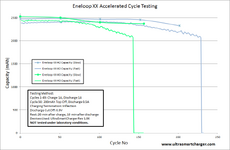
One cell performed very similarly to the first test, but the other lasted for a significantly larger number of cycles. The pattern of capacity decline is pretty much the same, just over a longer number of cycles. It's hard to say what the cause of this difference is - it could be that there is some variation between cells, but I wouldn't expect this considering that normal Eneloops are very consistent, and I would have expected that consistency to carry over into the Eneloop XX line as well.
As a follow up, I decided to run yet another test to compare a Eneloop XX with a Turnigy 2400 cell:

In this latest test, I ran both charges and discharges at 2 amps. In this case, the Eneloop XX survived for more cycles than 2 of the 3 previously tested - despite being run at twice the current. The Turnigy cell managed to last for more cycles, but at no point did it manage to beat the Eneloop XX in capacity.
Overall, I'd say that this is a disappointing result for the Eneloop XX. Unless the absolute maximum capacity is required, I would generally recommend the Turnigy 2400 cells ahead of the Eneloop XX cells - particularly considering the large price difference!
To begin my testing, I took a single Eneloop XX cell and a single Turnigy 2400 cell and placed them both in the same charger. For this test, I decided to run both charging and discharging at only 1 amp - as the cells are only rated for 500 cycles each, I decided that it was worth running the test at a lower rate.

To my surprise, despite being more expensive, the Eneloop XX cell lasted for a significantly lower number of cycles than the Turnigy cell. I then decided to run another test with a pair of Eneloop XX cells to make sure that there wasn't something unusually wrong with the first cell that I tested:

One cell performed very similarly to the first test, but the other lasted for a significantly larger number of cycles. The pattern of capacity decline is pretty much the same, just over a longer number of cycles. It's hard to say what the cause of this difference is - it could be that there is some variation between cells, but I wouldn't expect this considering that normal Eneloops are very consistent, and I would have expected that consistency to carry over into the Eneloop XX line as well.
As a follow up, I decided to run yet another test to compare a Eneloop XX with a Turnigy 2400 cell:

In this latest test, I ran both charges and discharges at 2 amps. In this case, the Eneloop XX survived for more cycles than 2 of the 3 previously tested - despite being run at twice the current. The Turnigy cell managed to last for more cycles, but at no point did it manage to beat the Eneloop XX in capacity.
Overall, I'd say that this is a disappointing result for the Eneloop XX. Unless the absolute maximum capacity is required, I would generally recommend the Turnigy 2400 cells ahead of the Eneloop XX cells - particularly considering the large price difference!


